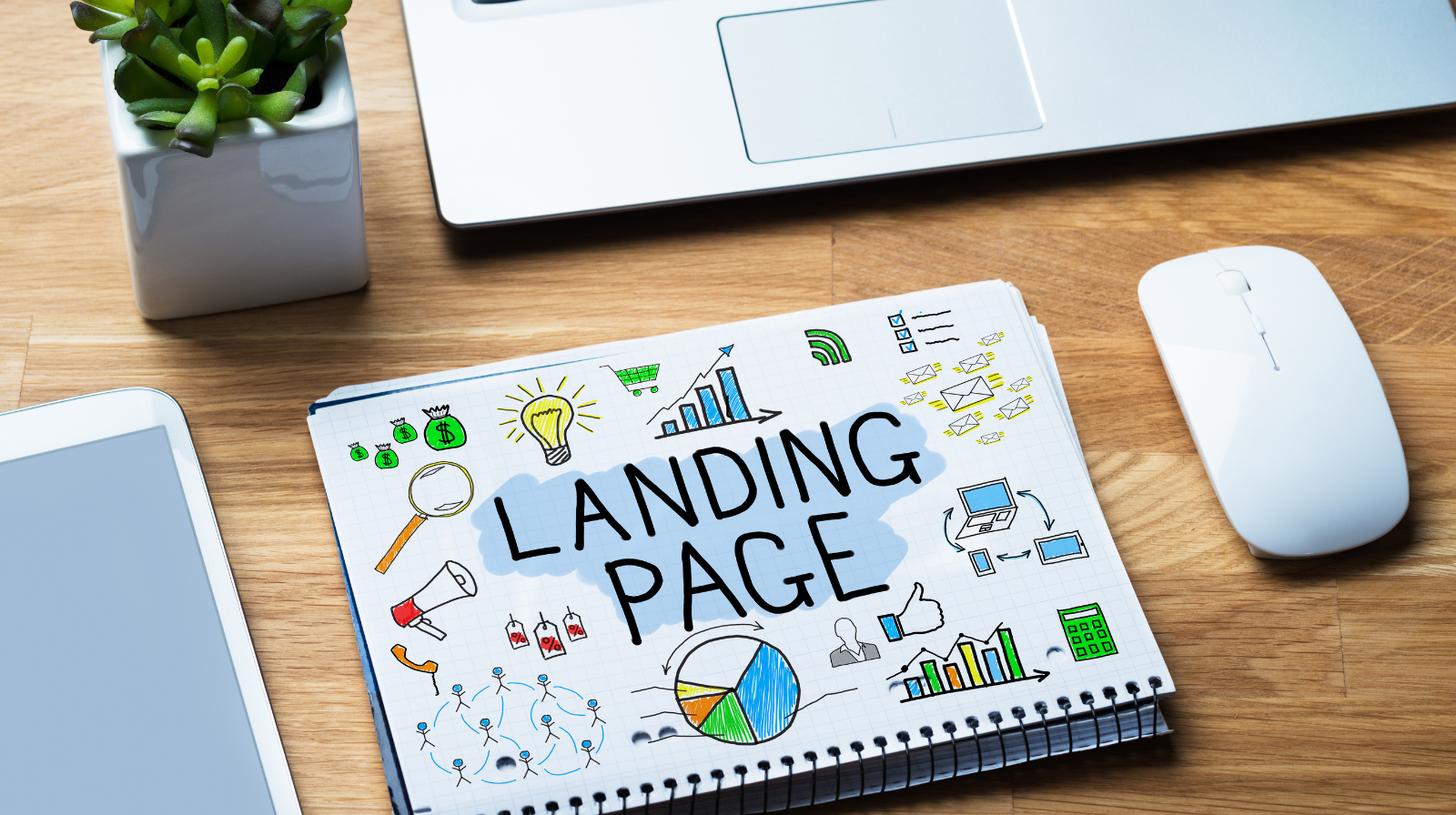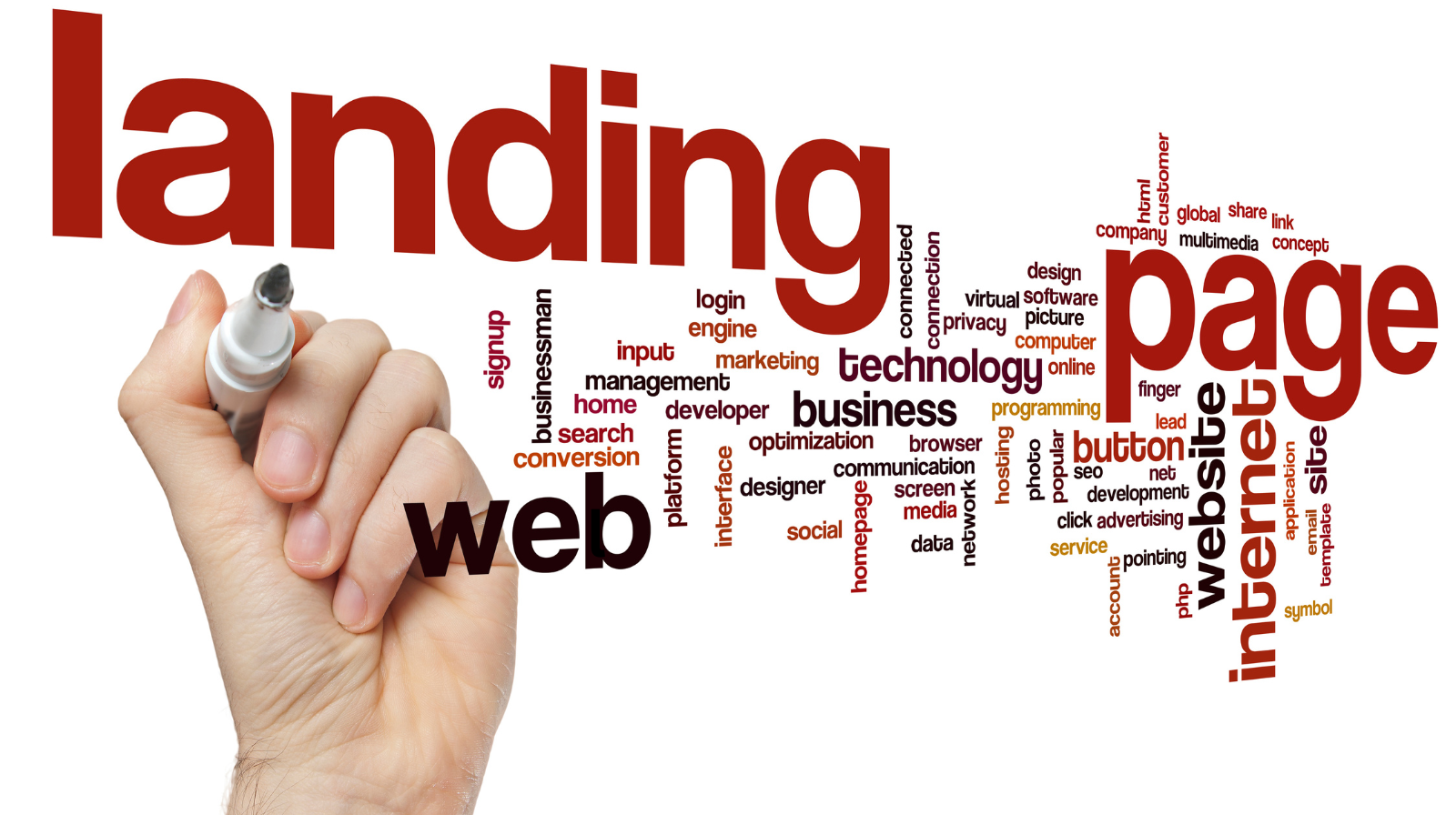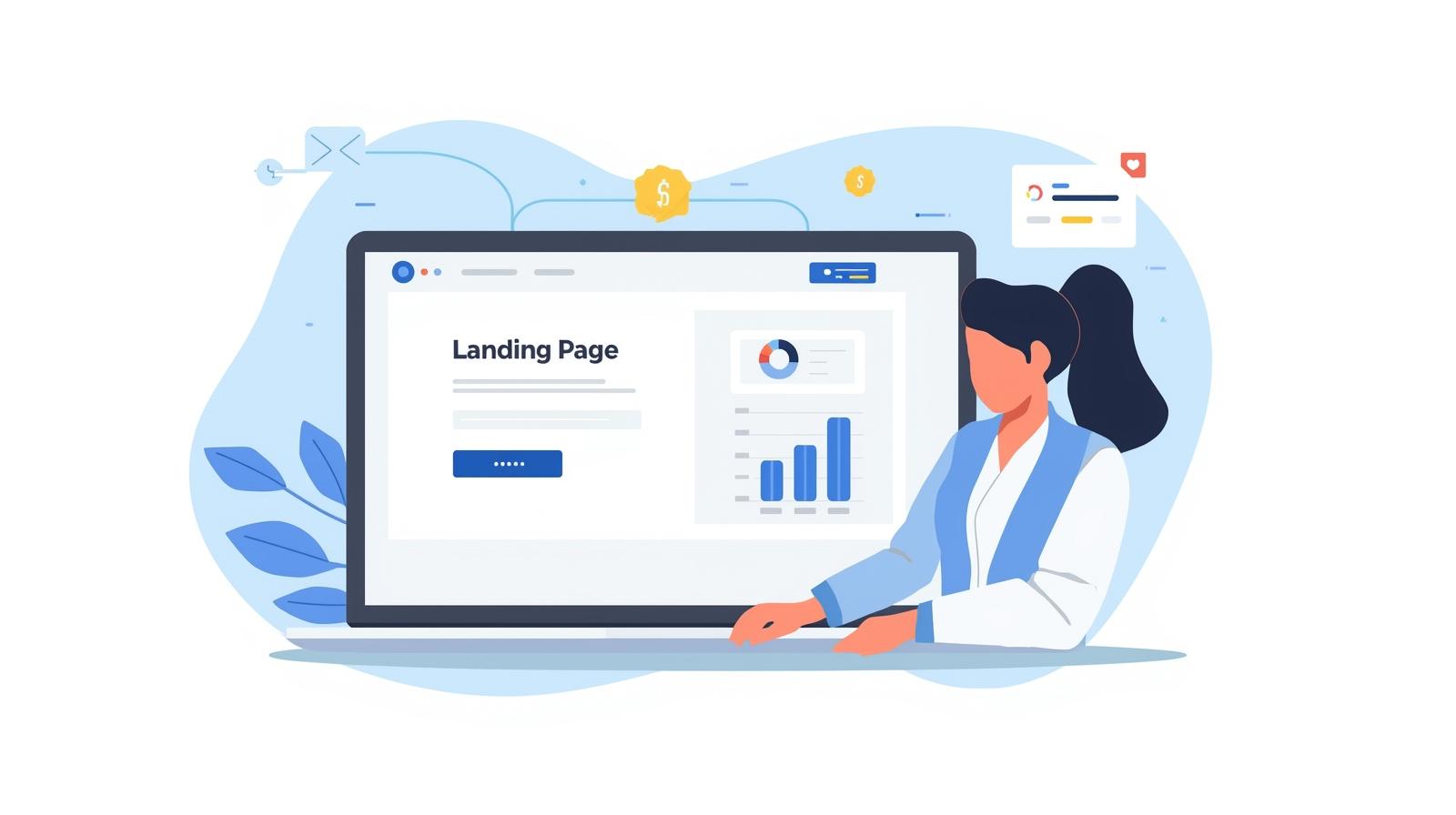In today’s digital marketing world, grabbing attention is only half the battle. The real challenge is turning visitors into leads or paying customers. This is where a landing page becomes an essential tool.
Unlike a regular web page, which might contain menus, multiple links, and broad brand information, a landing page has a single purpose: guiding the visitor toward one clear action.
For example, a homepage might encourage users to explore different sections of a website. In contrast, a landing page eliminates distractions and directs the visitor to sign up, download, register, or purchase. As a result, businesses can achieve better outcomes with fewer wasted clicks.
The benefits of a well-crafted landing page are significant. Not only can it increase conversions, but it can also deliver a higher return on investment (ROI) for your marketing campaigns.
In addition, landing pages help capture the right audience by aligning perfectly with ads, email campaigns, or social media promotions.
Throughout this guide, we will explore what makes landing pages effective, the key elements you should include, and proven optimization strategies. By the end, you’ll understand how to build a landing page that consistently turns clicks into customers.
What Is a Landing Page?
A landing page is a standalone web page built for one purpose: guiding visitors toward a specific action, such as signing up, downloading a resource, or making a purchase.
Unlike a homepage, which has menus and multiple links, a landing page removes distractions and directs attention to a single goal — improving conversion rates.
It also differs from a product page, which mainly describes an item but may lack strong calls-to-action or persuasive messaging. A landing page, however, is designed solely to convert.
You may also hear terms like lead capture page, squeeze page, or destination page — all describing the same concept.
With this focus, landing pages are essential in digital marketing, aligning visitor intent with a clear offer for better engagement and results.

Why Having a Landing Page Matter for Higher Conversions
In digital marketing, clicks only count when they turn into action. Landing pages make this possible by focusing on one goal and removing distractions, unlike homepages or blogs that split attention. This focus naturally boosts conversion rates.
Businesses use landing pages to achieve specific goals, such as:
-
Lead generation – capturing names, emails, or phone numbers through sign-up forms.
-
Sales conversions – encouraging visitors to buy a product, book a service, or complete checkout.
-
Event registrations – getting users to sign up for webinars, workshops, or live events.
-
Content downloads – offering eBooks, whitepapers, or templates in exchange for contact info.
When paired with ads, email campaigns, or social media promotions, landing pages create a seamless experience and deliver a higher ROI. In short, they simplify the visitor’s journey, guide them to one clear action, and help businesses grow faster.
Key Elements of a High-Converting Landing Page
Not all landing pages convert equally. The difference often lies in a few core elements that every high-performing landing page should include.
Unique Selling Proposition (USP)
Your USP explains why visitors should choose you over competitors. Keep it short, benefit-focused, and place it above the fold. Example: instead of “We sell fitness programs”, use “Get fit in 20 minutes a day—no equipment needed.”
Engaging Headlines and Subheadings
A strong headline grabs attention immediately. Make it benefit-driven, clear, and supported by subheadings that guide readers. Example: “Streamline Your Workflow in Minutes” with a subheading “Our all-in-one platform saves teams hours every week.”
Hero Images or Videos
Visuals build trust and connection. Use high-quality photos or short videos that show real people using your product or service. Keep videos brief (30–90 seconds) and benefit-focused.
Clear and Compelling Calls to Action (CTAs)
Your CTA drives conversions. Use action words like “Get Started” or “Claim My Offer”, make buttons stand out with contrasting colors, and place CTAs in multiple sections of the page.
Social Proof and Trust Signals
Trust reduces hesitation. Add short testimonials, case studies with results, client logos, or security badges. These reassure visitors and make them more confident to take action.

Designing Your Landing Page for Success
A well-designed landing page helps visitors focus on your offer without distractions. The right design boosts clarity, trust, and conversions.
Simple, Clean Layouts
Clutter confuses visitors and lowers conversions. Use plenty of white space, limit unnecessary elements, and highlight only the most important content—your offer and CTA.
Mobile-Friendly and Responsive
More than half of visitors browse on mobile. A responsive landing page ensures your design, text, and CTAs look great on any device. Mobile optimization improves both user experience and SEO rankings.
Visual Hierarchy and Color Psychology
Guide attention with design. Use larger fonts for headlines, contrasting colors for CTAs, and visual cues like arrows or icons. Colors matter too—green often signals “go,” while orange or red grabs attention for urgency.
Writing Landing Page Copy That Converts
Even the best design won’t deliver results without persuasive copy. The words you use on your landing page guide visitors from curiosity to action.
Crafting Benefit-Driven Copy
Great landing page copy focuses on benefits instead of just listing features. Instead of saying “Our tool has automation features,” say “Save hours every week with automated workflows.” Benefits speak directly to what the visitor gains, making your offer irresistible.
Tips for Writing CTAs That Get Clicks
Your call to action (CTA) should be clear, urgent, and action-oriented. Use verbs like “Download,” “Start,” or “Claim” to inspire immediate action.
Adding urgency (“Limited Offer”) or personalization (“Get My Free Trial”) increases conversions. Keep CTAs short, specific, and visually bold.
Headlines That Attract Attention
Headlines decide whether visitors stay or bounce. The best ones balance clarity and curiosity: they explain the value quickly while sparking interest.
For example: “Double Your Leads in 30 Days” is specific, benefit-driven, and easy to understand. Supporting subheadings can then expand on the promise and guide readers deeper into the page.
Optimizing Your Landing Page for Performance
A landing page doesn’t just need to look good—it also needs to perform well. In fact, optimization ensures your page is discoverable, loads quickly, and consistently improves over time. Let’s break it down step by step:
SEO Optimization for Landing Pages
For search engines to rank your page, they must understand it clearly. That’s why you should use your target keyword (“landing page”) in the title tag, headings, meta description, and first paragraph.
In addition, organizing content with clear headings and short paragraphs improves readability. Finally, adding structured data helps search engines better connect your page with user intent.
Landing Page Load Speed
Speed is critical. If your page loads slowly, visitors may leave before engaging, which increases bounce rates and hurts both SEO and conversions.
To prevent this, compress images, streamline code, and use reliable hosting. As a rule of thumb, aim for load times under three seconds—because the faster the experience, the more likely visitors are to stay and convert.
A/B Testing
Even a well-designed landing page can perform better with testing. For example, A/B testing allows you to compare variations of layouts, headlines, CTAs, or images.
This way, you discover what resonates most with your audience. Over time, consistent testing and refinement lead to higher conversion rates and stronger ROI.
Measuring Success and Improving Results
Creating a landing page is only half the job—the real progress comes from measuring and refining. Without tracking results, you’ll never know what truly works.
Landing Page Conversion Rate
Your conversion rate shows how many visitors take the desired action (form fills, purchases, sign-ups). To calculate it, use the formula: (Conversions ÷ Total Visitors) × 100. The higher the percentage, the more effective your page.
Using Analytics Tools
Numbers tell the story. That’s why tools like Google Analytics or Hotjar are invaluable for tracking traffic sources, bounce rate, time on page, and conversions. By analyzing this data, you can see where visitors engage—and where they drop off.
Iterating and Refining
Landing page success is rarely “set and forget.” Instead, you should continuously test headlines, CTAs, and layouts. Even small tweaks based on data can improve performance. As a result, each round of optimization brings you closer to maximizing conversions and ROI.

Common Landing Page Mistakes to Avoid
Even small mistakes on a landing page can cost you conversions. Here are some of the most common pitfalls to watch out for:
-
Too Many CTAs or Distractions – Bombarding visitors with multiple buttons, links, or pop-ups can overwhelm them. Stick to one clear, focused action per landing page.
-
Poor Headline Clarity – If visitors don’t immediately understand your offer, they’ll bounce. Avoid clever but confusing headlines; instead, be direct and benefit-driven.
-
Ignoring Mobile Optimization – With most users browsing on smartphones, a landing page that isn’t mobile-friendly will lead to high drop-off rates. Ensure responsive design and fast load speeds.
-
Using Vague or Generic Copy – Phrases like “Sign Up Today” or “Click Here” don’t inspire action. Instead, use persuasive, specific language that highlights the benefit (“Get My Free Trial,” “Download Your Free Guide”).
By avoiding these mistakes, you create a smoother user experience and increase your chances of turning clicks into conversions.
Conclusion
Landing pages are powerful tools for boosting conversions. Unlike homepages, they focus on one goal: capturing leads, driving sales, or sign-ups.
We’ve explored what makes them effective: clear headlines, strong CTAs, social proof, and mobile-friendly design, while also noting mistakes to avoid.
Now, put these best practices into action. Create your page, test different elements, and keep refining. The more you optimize, the higher your conversions will grow.



